*This article quotes a past note from Representative Hino.
Hello, I'm Hino, the representative of mushco , Japan's first brand specializing in mushroom skin (mushroom leather).
mushco was launched in December 2023 with one of its main goals being to contribute to Japan's forestry and timber industries .
I would like to share my thoughts on how new mushroom-derived materials can lead to the revitalization of Japan's forestry and timber industries, along with what I have learned from a program I am currently participating in called Bundle.
Conclusion (Summary)
I intended to write this article with a detailed explanation of the industry so that I could properly convey the importance of forestry and the forest industry in modern times, but it ended up being quite voluminous.
So, I'll just summarize the contents first!
The reasons why mushroom skin (mushroom leather) contributes to sustainable forests are as follows :
- In today's world where global warming is a major issue, it is important to maximize the CO2 absorption effect of forests.
- On the other hand, more than 60% of Japan's forests are nearing harvesting age, and their CO2 absorption capacity is not being fully utilized.
- To solve the above problems, it is necessary to improve the profitability of the forestry industry and to cut down and replant forests in a timely manner. However, as demand for existing wood uses such as construction materials is declining, it is necessary to create new uses for wood.
- Mushroom skin (mushroom leather) is made from sawdust (wood) produced from mushrooms, so increasing the popularity and demand for mushroom skin could lead to new applications for wood and could also contribute to increasing the value of wood.
Now, let's explain each of these in detail.
Introduction
Carbon neutrality aims to achieve virtually zero emissions of greenhouse gases (GHGs), which cause global warming. In order to achieve the Paris Agreement's goals of limiting the rise in global average temperature and achieving virtually zero GHG emissions in the second half of this century, the Japanese government set a target of reducing GHG emissions by 26% by 2030 compared to fiscal 2013 levels. In October 2020, then-Prime Minister Yoshihide Suga declared that Japan would aim to achieve carbon neutrality by 2050. With this global movement toward a decarbonized society and the acceleration of ESG investment, forest resources and the forestry industry are attracting more attention than ever before .
However, Japan's forestry industry currently faces many challenges, including a labor shortage caused by urban concentration and an aging population with a declining birthrate; a decline in domestic timber demand due to globalization and the distribution of wood substitutes; and falling timber prices due to the increasing complexity and opacity of the timber supply chain . As a result, the cost of reforestation exceeds the profits earned from logging, and the industry has become subsidy-dependent, leading to a continued decline. In Japan, where 70% of the country's land area is forested, the decline of forestry not only means a decline in the economies of mountainous and hilly regions as a whole, but also makes it more difficult to maintain forests, which play important roles in environmental conservation, such as serving as CO2 sinks, watershed conservation, and biodiversity conservation.
To achieve carbon neutrality, a goal of the international community, it is essential to properly maintain forests and revitalize the forestry industry, which has been losing strength year by year, in order to reduce the concentration of carbon dioxide (CO2) in the atmosphere .
So what should we do?
I believe that a new mushroom-derived material called "mushroom skin (mushroom leather)" could be a ray of hope in addressing the current crisis facing Japan's forestry and lumber industries .
I'll explain how it all connects.
What is a Bundle?
Bundle is an entrepreneurial training program sponsored by the Japan Federation of Young Wood Organizations, which began in July 2024, to produce entrepreneurs in the forestry and timber industry. For more information, please click here .
Aimed at people who have a strong interest in Japan's forestry and timber industry and want to take action with a sense of ownership, we have asked them to provide detailed explanations about Japan's forestry and timber industry, which can be somewhat complex and the issues it faces can be difficult to understand.
In this note, I have picked out the points that I thought were particularly important from what I learned there and written them down.
The multifaceted functions of forests
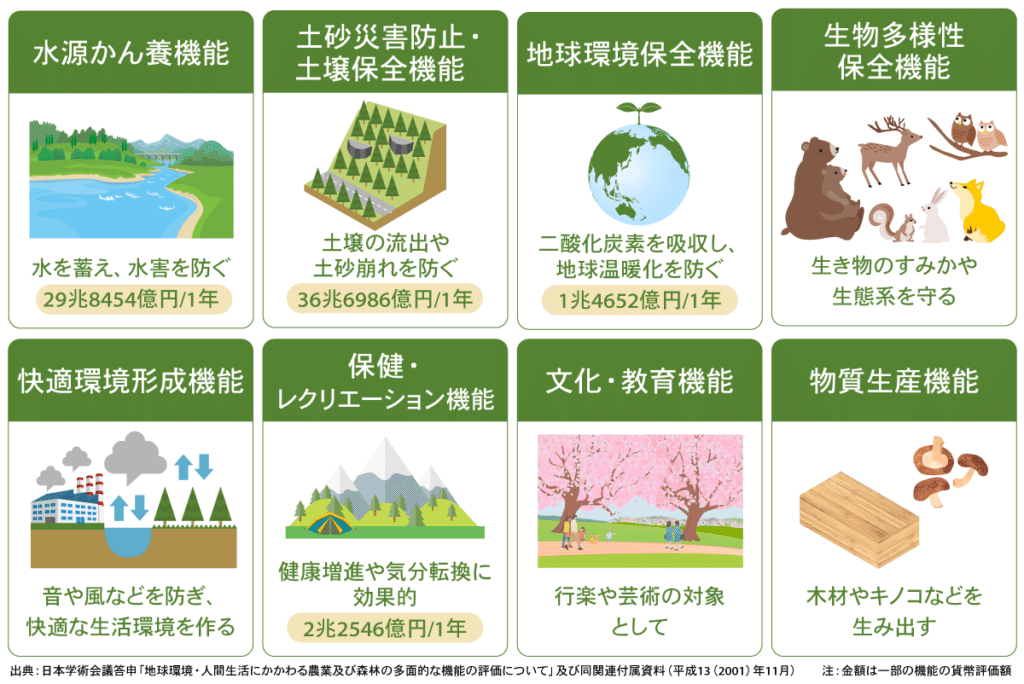
Forests have multiple functions, such as preserving national land, replenishment of water sources, prevention of global warming, preservation of biodiversity, and supply of forest products such as timber, and are known as "green social capital" that brings various benefits to the lives of citizens through these functions.
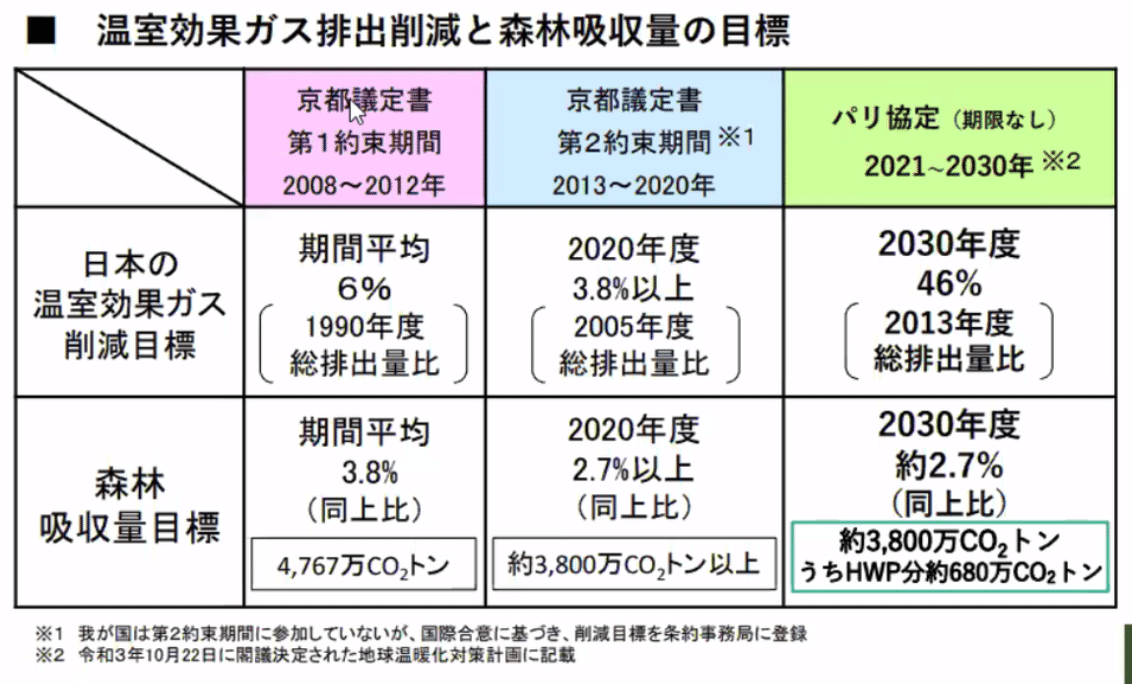
The Paris Agreement calls for a 46% reduction in CO2 emissions by 2030.
At the same time, the target for forest absorption has been set at approximately 2.7%.
As such, in addition to the public benefits that forests provide, they have also come into the spotlight as a way to combat global warming.
As a result, in addition to those involved in the forestry and timber industries, various other entities are now becoming more involved with forests, and there is a growing awareness that forests should be developed and preserved, and that this should lead to regional revitalization.
Overview and issues of Japan's forest industry
Japan is one of the world's leading forest-rich countries, with forests covering approximately two-thirds of its land area. Its forest area, mainly man-made forests, is increasing by approximately 60 million cubic meters each year, and is said to currently stand at approximately 5.6 billion cubic meters.
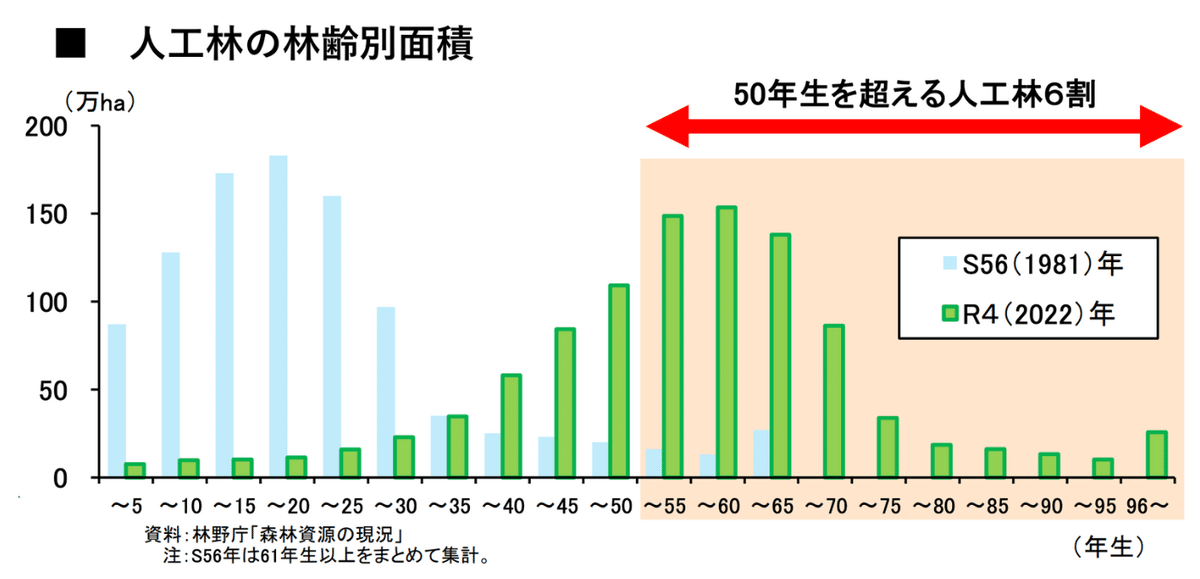
However, 60% of artificial forests are over 50 years old and have reached maturity and are ready for use . As older trees rapidly lose their ability to absorb CO2, it is becoming increasingly important to further promote the circular use of wood resources, which involves cutting, using, planting, and growing .
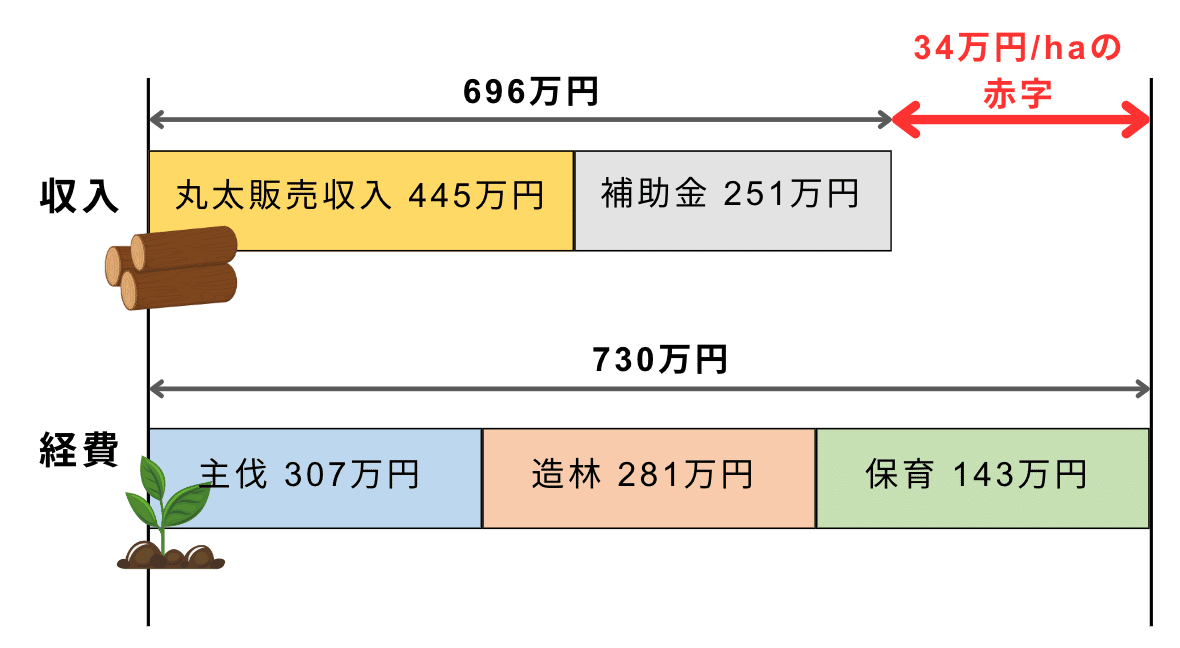
On the other hand, due to a lack of workers, unprofitability due to high reforestation costs, and a year-on-year decline in demand for existing wood for building materials, the cost of reforestation is now greater than the profits earned from harvesting timber, resulting in an industry structure in which the more work is done, the more it incurs losses.
Therefore, there is a need to reduce the current costs of reforestation and increase the demand for and value of domestic timber in various forms .
In response to such modern social issues, we are working to increase demand for domestic timber and improve its value. In order to contribute through the mushroom skin (mushroom leather) approach , we launched "mushco," Japan's first brand specializing in mushroom leather.
What is mushroom skin (mushroom leather)?
Mushroom skin (mushroom leather) is a new leather-like material made from mushroom mycelium, a type of vegan leather. The part of mushrooms we commonly eat is called the "fruiting body," but mushrooms also grow by spreading mycelium across wood and soil. Mushroom skin (mushroom leather) is the application of this fibrous mycelium to leather.
Mushroom skin (mushroom leather) does not contain petroleum as a raw material and can be produced with minimal use of chemicals.
Compared to natural animal leather and synthetic leather, the manufacturing process has a much lower environmental impact, and it has recently been attracting attention in the fashion and interior design industries as a material that takes animal welfare into consideration.
*For more details, click here
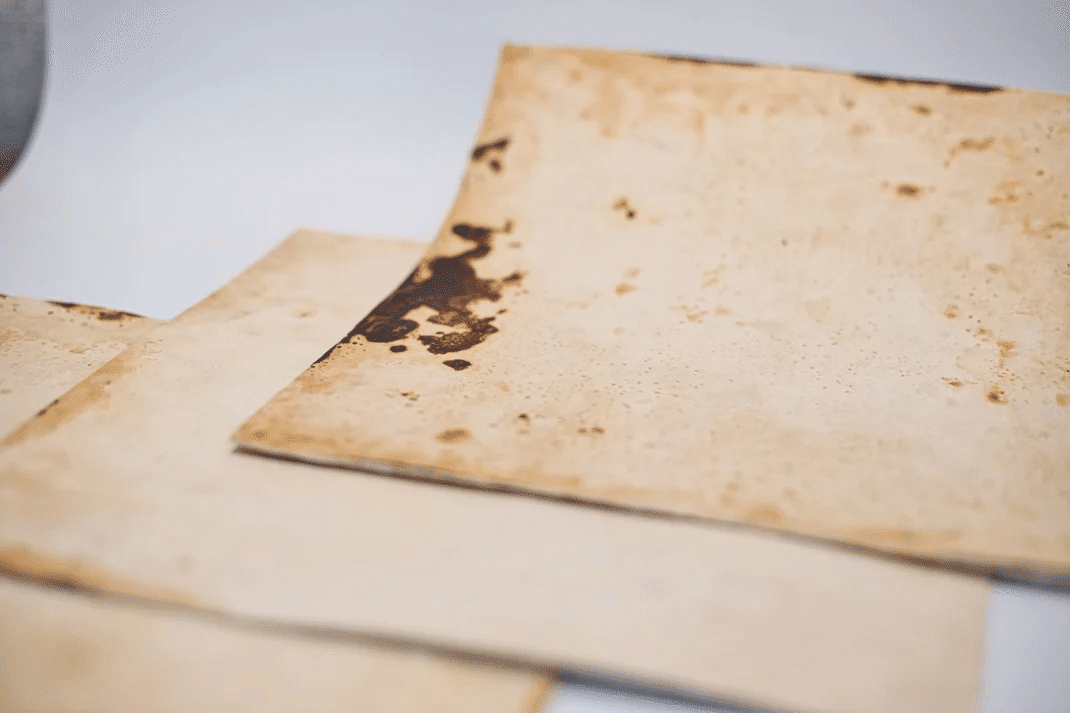
It is characterized by the soft texture and unique patterns that only natural materials can offer, and the pattern in particular is unique in that no two pieces are the same .
The traces of mushrooms (fruiting bodies) growing from the mycelium are unique to each material, so the final product will also have a one-of-a-kind pattern. The wonderful thing about this product is that it will become a one-of-a-kind item that you will grow to love .
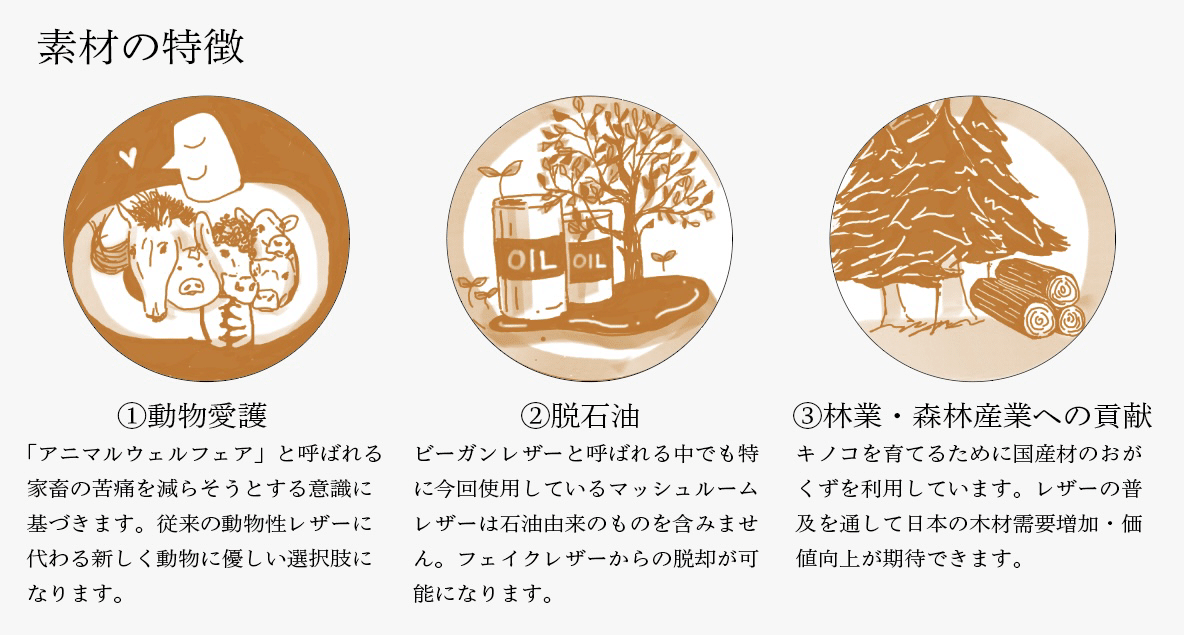
Mushroom skin (mushroom leather) is such a wonderful material, but there are three main trends driving its popularity:
①Animal welfare
In Europe and other areas where animal welfare is highly recognized, awareness of "animal welfare," which aims to reduce the suffering of livestock, is on the rise.
② Moving away from petroleum -based fake leather
3. Contribution to the forestry and timber industry : Using domestic sawdust to grow mushrooms ▷ Increasing demand for and improving the value of timber in Japan through the spread of leather
① and ② are values that are particularly prevalent in Europe, while ③ is thought to be unique to Japan, but this time we will focus on ③.
Mushroom skin (mushroom leather) and its connection to Japan's forestry and timber industry

As mentioned above, mushroom skin (mushroom leather) is made from mushroom mycelium, but in fact, organic materials such as sawdust (wood powder) are used as raw materials to grow the mushrooms .
*Sawdust: Wood powder produced when wood is sawn at a sawmill. For mushroom cultivation, sawdust is generally made specifically from logs.
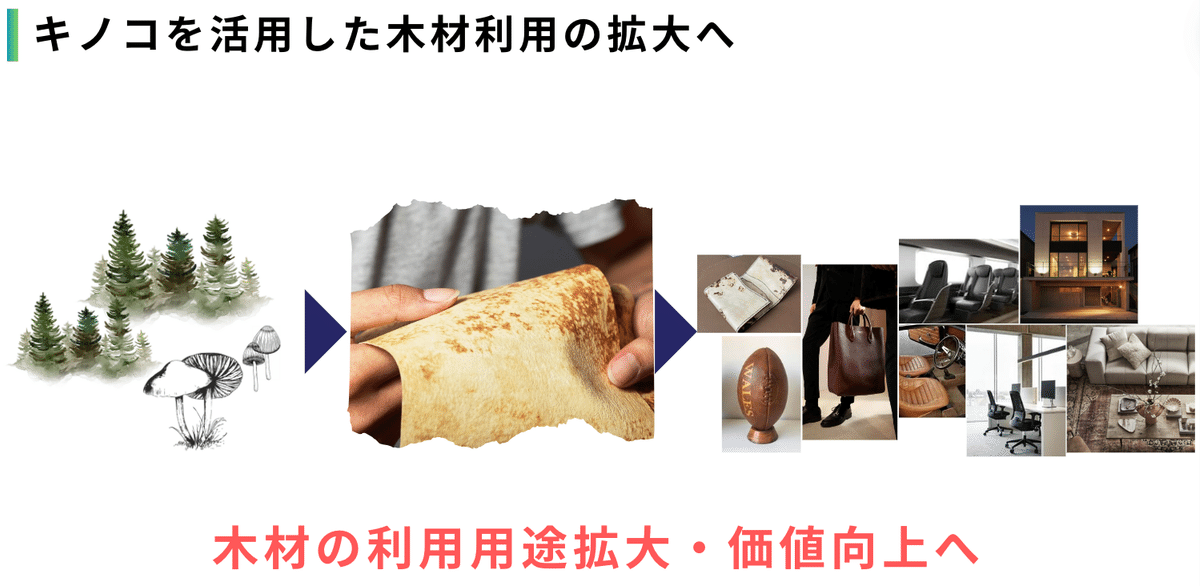
Therefore, if mushroom skin (mushroom leather) becomes more popular and demand for leather increases, the demand for sawdust, the raw material for leather, i.e., wood, will also increase, which could lead to an increase in the value of wood .
When I first learned about domestic mushroom skin (mushroom leather) and confirmed that it was made from sawdust, I saw great potential in it.
In nature, mushrooms (wood-decaying fungi) grow using a variety of tree species, including broad-leaved and coniferous trees, as a nutrient source.
Mushroom skin (mushroom leather) can potentially be made from a variety of mushrooms, and therefore has the potential to make effective use of a wide range of wood resources .
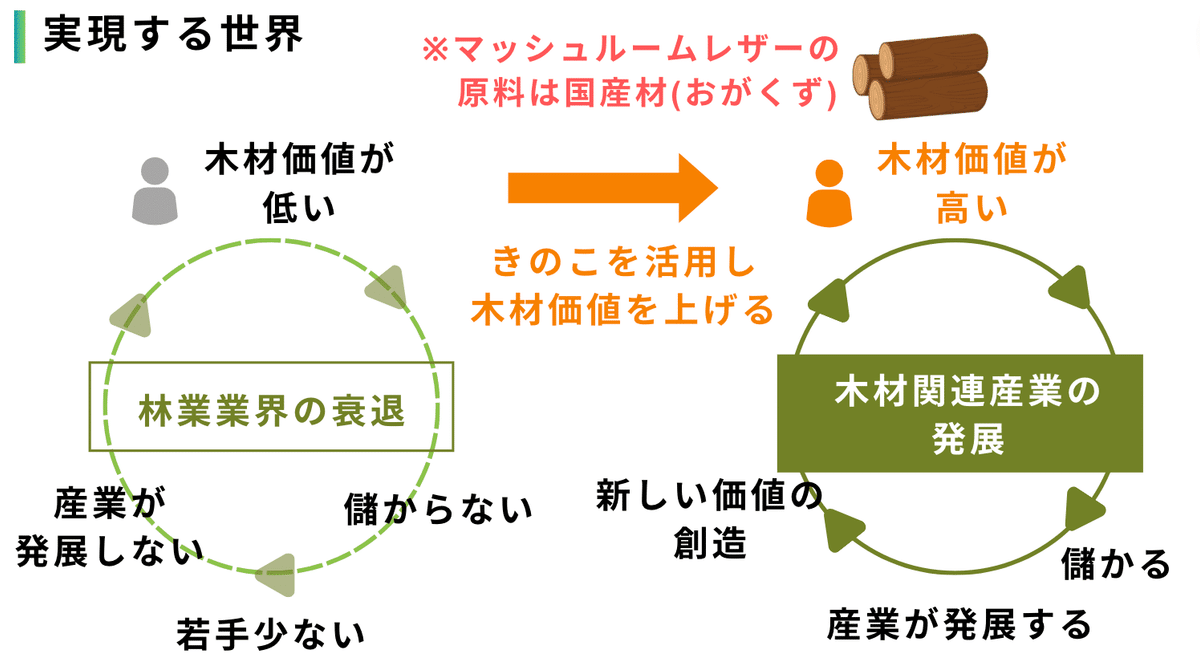
For this reason, we believe that mushroom skin (mushroom leather) will play an important role in the future of sustainable forests . Therefore, in order to popularize this innovative material, we decided to launch a brand business specializing in mushroom skin (mushroom leather), the first of its kind in Japan.
In the forestry and timber industry, it is likely that costs will be reduced by utilizing AI and IoT in the near term. However, in the medium to long term, it will undoubtedly be important to improve the brand value of timber.
We would like to continue to pave the way now so that, over the next five or ten years, we can be sure that mushroom skin (mushroom leather) will contribute to the forestry industry .
About mushco
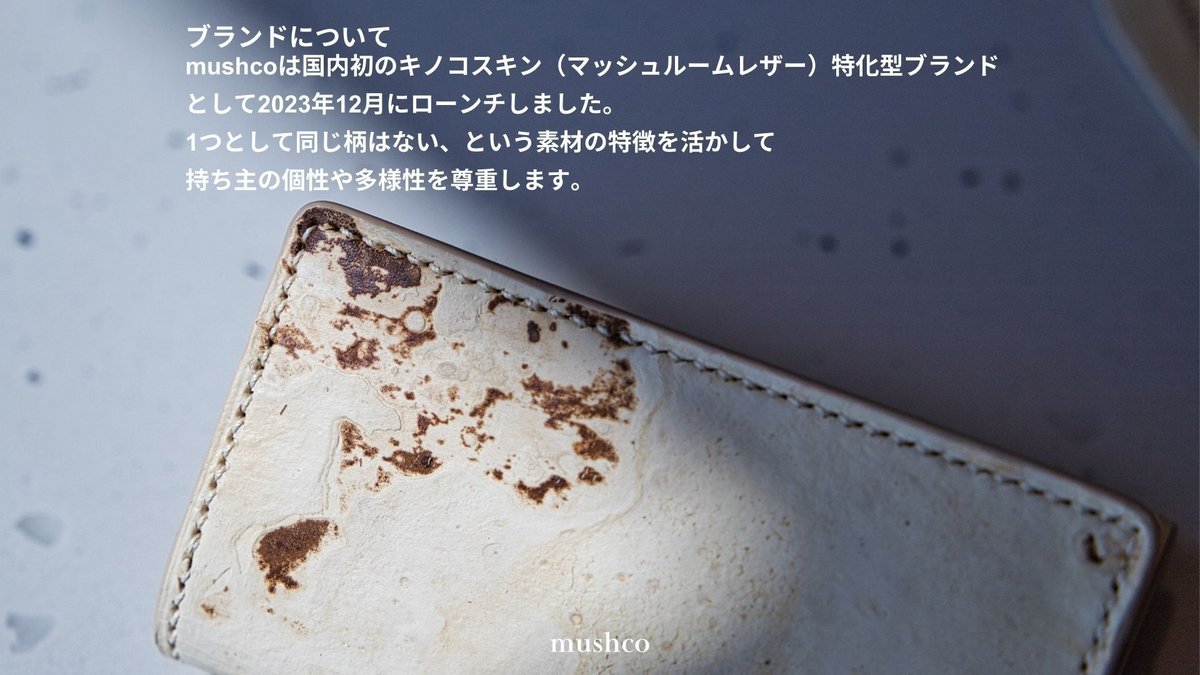
mushco is Japan's first brand specializing in mushroom skin (mushroom leather).
The brand was launched in December 2023.
Not only is it a sustainable material, but we also recognize the unique patterns and unevenness of mushroom skin (mushroom leather) as a unique feature of natural materials , and we develop products that make the most of these qualities, while also respecting the individuality and diversity of those who pick up and use our products .
In April 2024, we conducted a crowdfunding campaign for our first product, a business card holder, and received a lot of support and feedback from many people.

We are currently working on further product development so that more people can try mushroom skin (mushroom leather) products.
Their mission is to "achieve both sustainability and well-being" by developing products using environmentally friendly mushroom skin (mushroom leather) to contribute to a sustainable society, while ensuring that the individuality and diversity of the owners of their products are respected and they feel comfortable and happy.
lastly
Thank you for reading this far.
I will continue to write about behind-the-scenes stories, my thoughts on mushco, and the brand's daily growth story.
Please look forward to the next content 🍄

